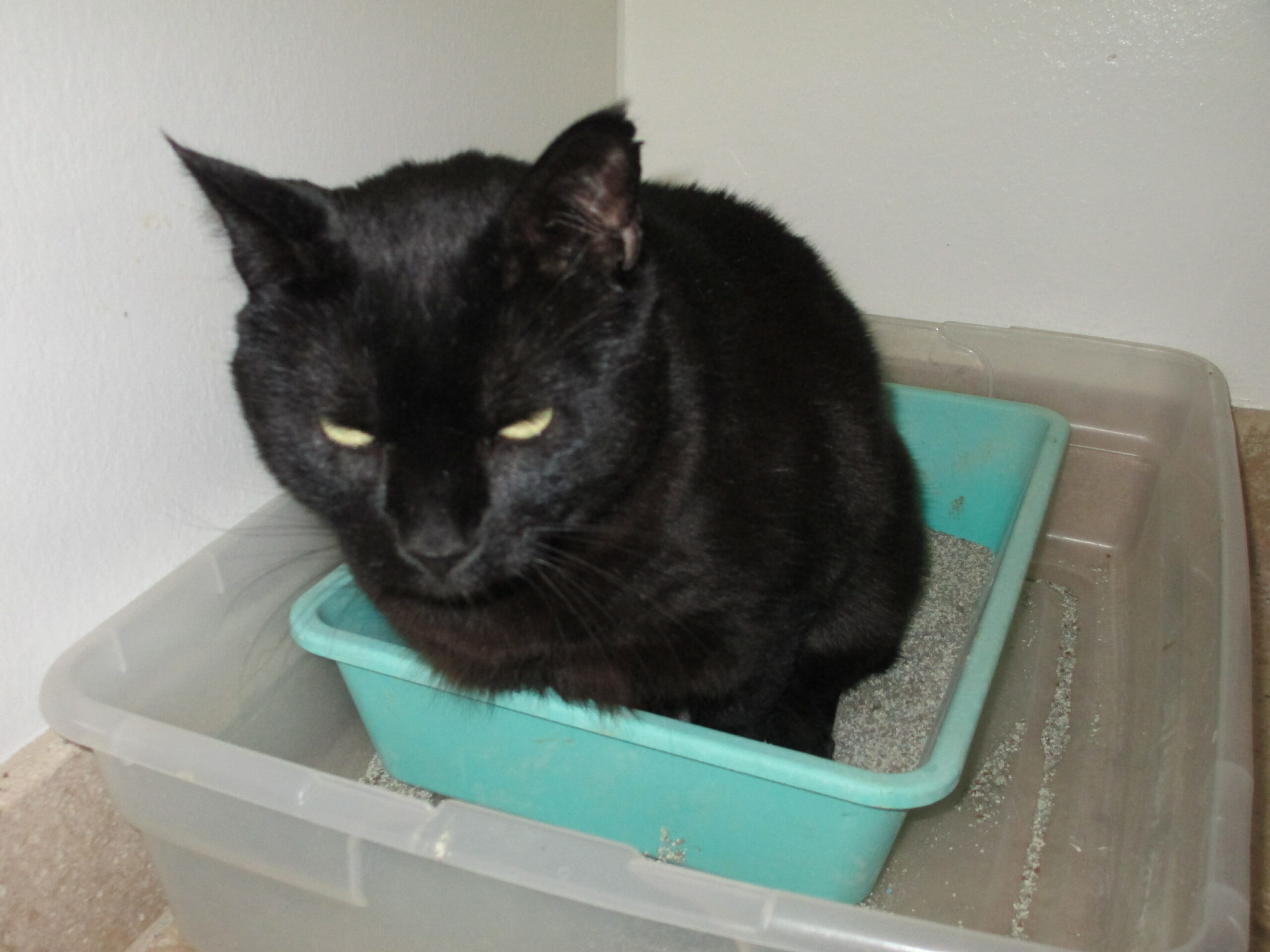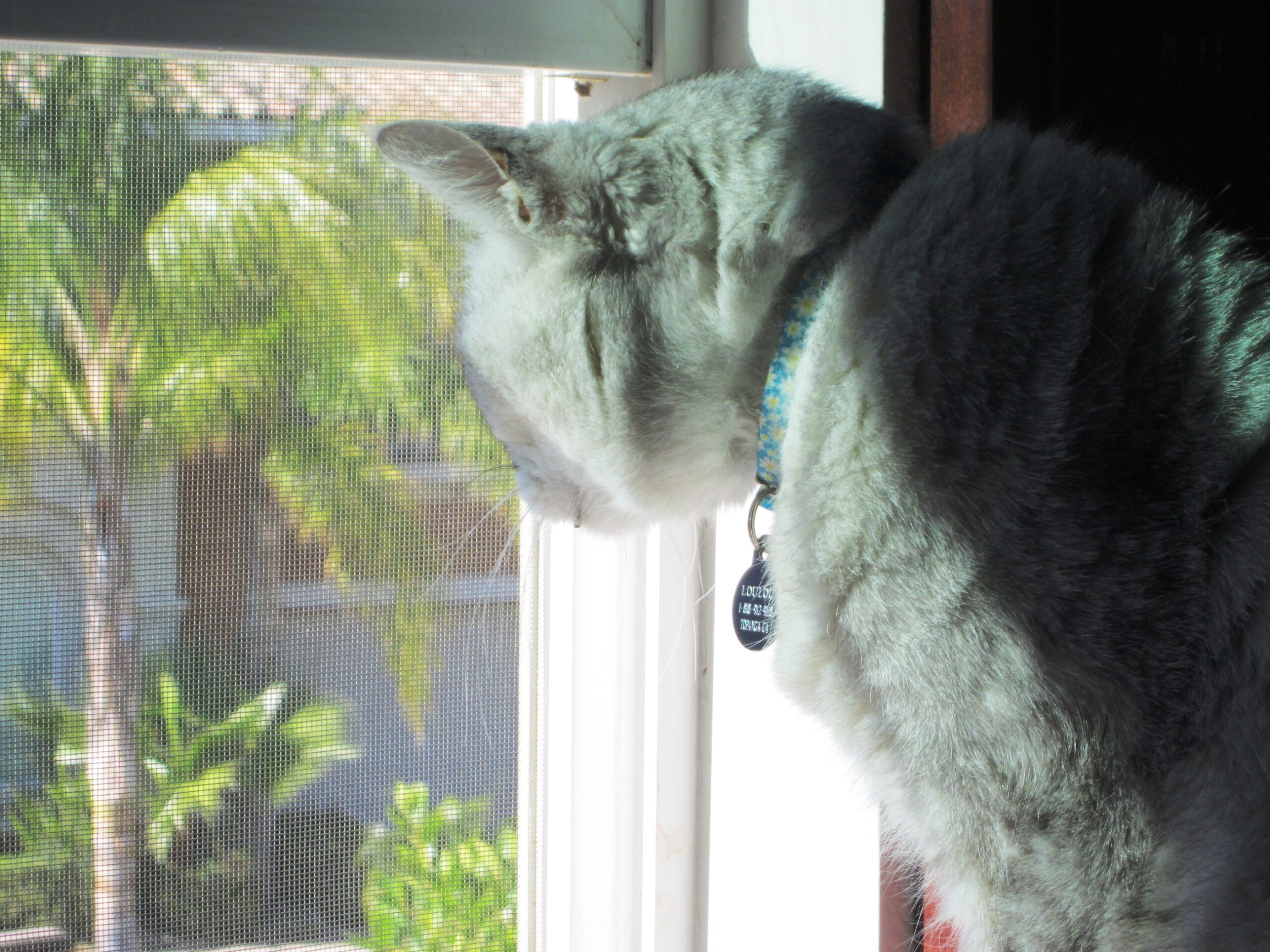Barks Blog
Thinking Outside the (Litter) Box
By Marilyn Krieger
Litter box avoidance is one of the most common reasons cats are surrendered to shelters and euthanized. It is so sad and so unnecessary. Although the problem is hard to live with, it is also one of the easiest to solve. Some of the solutions are simple — others are more involved.

Male and female cats of all ages can develop litter box challenges. There is always a legitimate reason for cats to avoid using their litter boxes. They are not bad cats, nor are they misbehaving. They are responding instinctually to stressful situations or something in the environment. If that’s not the case, then there could be medical problems causing the behavior.
Cats who eliminate outside their litter boxes need to be examined immediately by a veterinarian. Painful and often serious medical problems can cause litter box avoidance challenges. Only after veterinarians give cats a clean bill of health can the problem be approached as behavioral.
The next step is determining the causes of the behavior. After identifying the triggers, implement a behavior plan that includes litter box management, environmental changes and force-free behavior modification.
Although there are many reasons for this unpleasant behavior, below we examine seven of the most common causes, along with actions you can take to convince cats to always favor their litter boxes.
Intact cats are more prone to spraying and eliminating outside their litter boxes then those who have been spayed and neutered. This is not just an intact male issue. Whole females will also mark by spraying and eliminating outside litter boxes. The answer is to spay and neuter cats.
It is easy to become lazy and forget to scoop litter boxes. Unfortunately, this oversight often results in cats finding places that are cleaner than their litter boxes to do their business. Scoop litter boxes at least once a day. Additionally, completely empty, wash and then refill litter boxes with fresh litter on a regular basis.
Often cat parents do not provide enough litter boxes for their cats. If a litter box is dirty or does not feel safe, there needs to be others that the cats can choose to use. The rule of the cat box is – one box per cat and one for the house. So add more litter boxes.
Cats in the Hood

Cats do not like to use litter boxes that are in areas such as cabinets and closets where they feel they might be trapped. Nor do they want to do their business in high traffic or noisy areas. Great cat box locations have views of the room and out of the door. Place litter boxes in areas where cats can see and escape any potential threats.
Also, the type of litter box matters! Often cats will avoid using litter boxes that are too small and those that are covered. Covers keep the odors and litter dust in the box and, although cat parents may prefer this, cats do not. Because there is only one way in and out of covered litter boxes, cats can feel trapped inside them. Unfortunately, most commercial boxes are just too small! Cats may eliminate over the edge or right outside of tiny litter boxes. Ideally, litter boxes are uncovered and at least 1.5 times the length of the cat.
Cats will repeatedly urinate on areas that are not thoroughly cleaned with a good enzyme cleaner. Enzyme cleaners work as they dry, sometimes it takes a couple of applications to effectively eliminate the odor.
The sight and smell of neighborhood cats can upset indoor resident cats and they may respond by eliminating around the windows and doors where they see and smell the visitors. The outsiders need to be discouraged from hanging around.
Deterrents may help but they need to be safe, never harming the unwelcomed visitors. In addition, restrict the resident cats’ view of the trespassers by covering windows with paper, fabric, or decorative film but be aware that some cats may find it frustrating if they can no longer see outside. If the resident cats are indifferent however, then go ahead, and just uncover the windows after the visitors no longer hang out.
Do not expect immediate results. It takes time, consistency and patience to modify behaviors. If you find you are not progressing and are becoming frustrated, find help from a qualified cat behaviorist or a certified cat behavior consultant.
This article was first published in BARKS from the Guild, April 2014, p. 42-43.
About the Author
Marilyn Krieger, certified cat behavior consultant and owner of The Cat Coach LLC®, solves cat behavior problems nationally and internationally through on-site, phone and Skype consultations. She also writes behavior columns for Catster and Cat Fancy Magazine, and is a frequent guest on television and radio.
